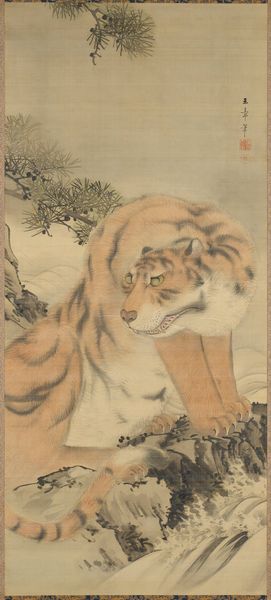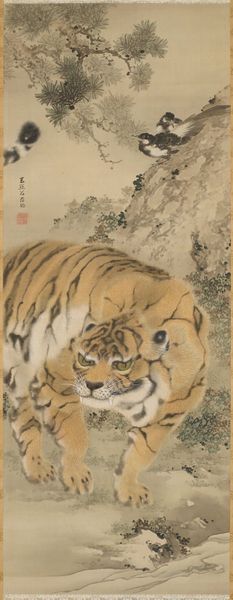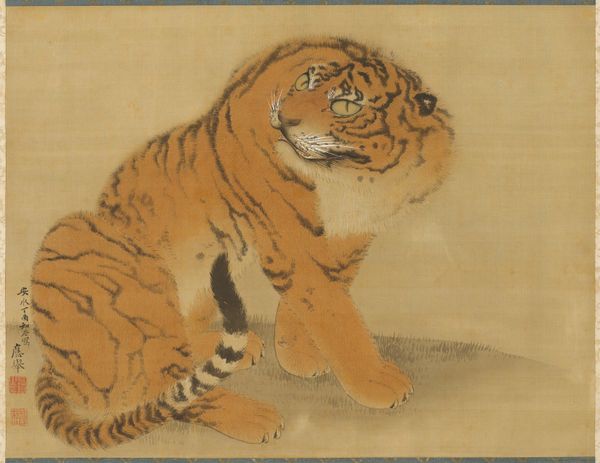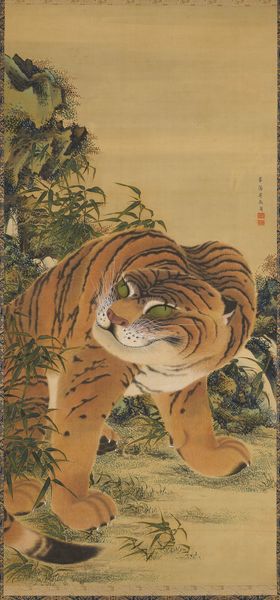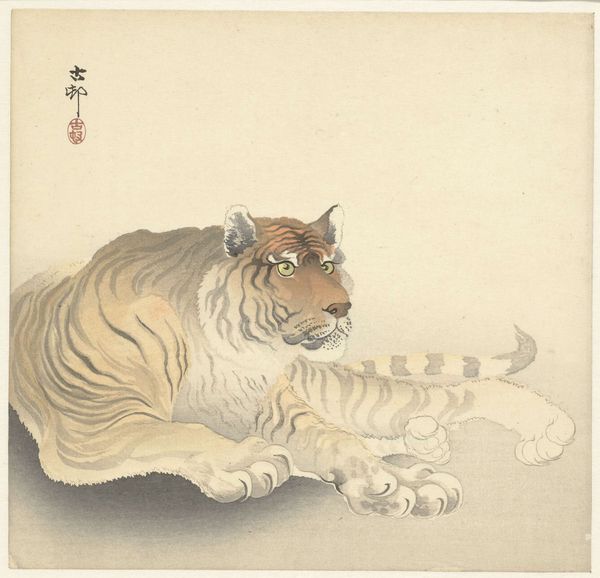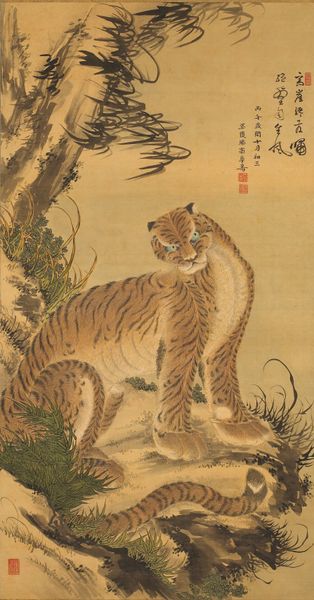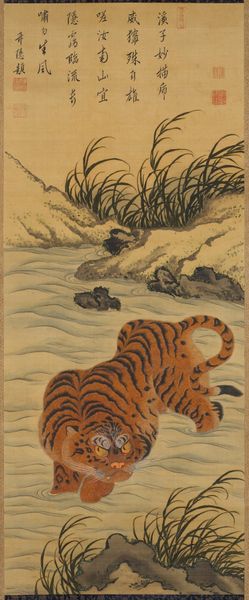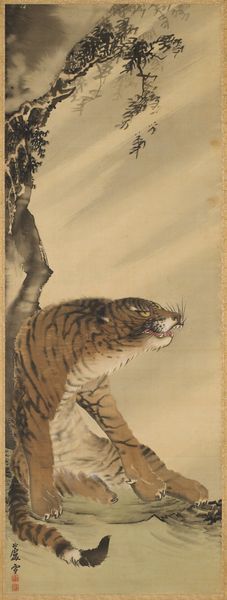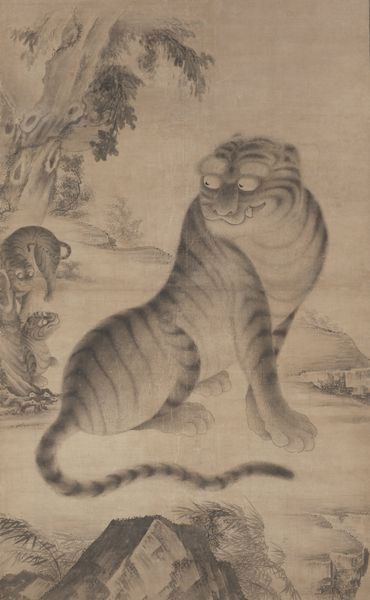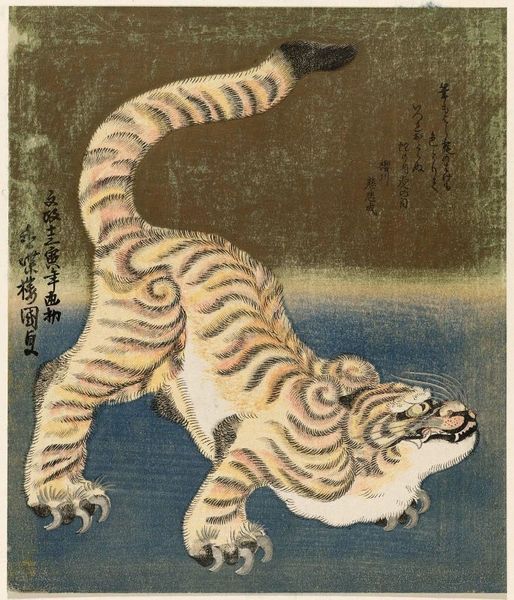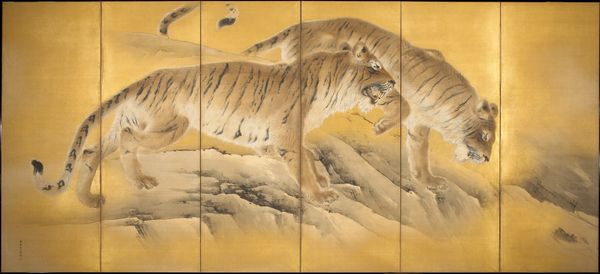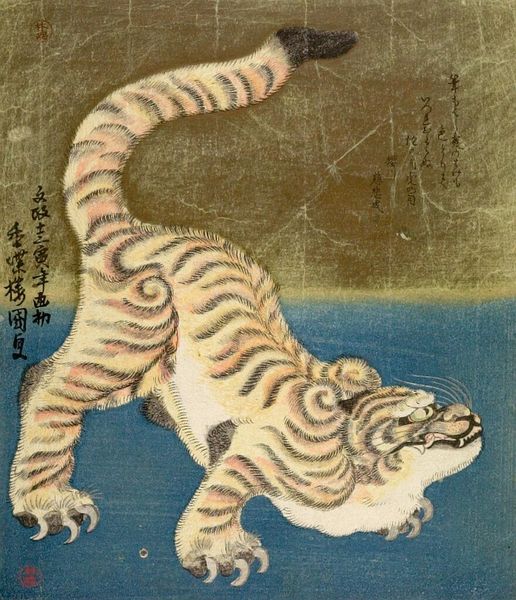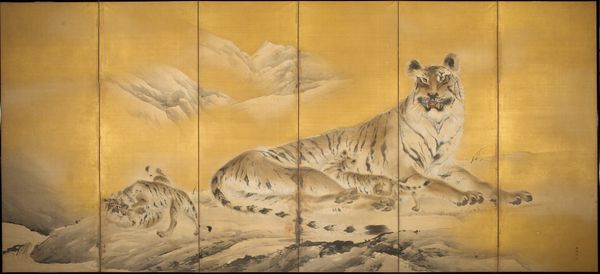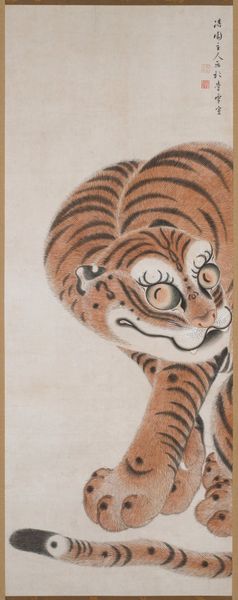
drawing, paper, hanging-scroll, ink
#
drawing
#
animal
#
asian-art
#
landscape
#
figuration
#
paper
#
hanging-scroll
#
ink
#
naive art
#
orientalism
Dimensions: 52 9/16 x 23 in. (133.51 x 58.42 cm) (image)80 9/16 x 27 7/8 in. (204.63 x 70.8 cm) (overall, without roller)
Copyright: Public Domain
Matsui Keichū painted this image of a tiger cleaning its paw in ink and color on silk sometime in the late 18th or early 19th century in Japan. In Japanese art, the tiger motif gained popularity during the Edo period, often appearing in paintings, screens, and decorative arts. Although tigers are not native to Japan, they were well-known through Chinese art, stories, and imported textiles. The tiger became a symbol of power, courage, and protection, often associated with samurai culture. Matsui’s tiger is an interesting case because, while the tiger typically symbolizes strength, here, it is presented in a moment of domesticity, which can be interpreted as a self-conscious and even humorous commentary on this association of strength. To better understand this image, one could research the social role of animals in Japanese art and culture, as well as study the relationship between Japanese and Chinese artistic traditions. The study of art history is always contingent on social and institutional context.
Comments
No comments
Be the first to comment and join the conversation on the ultimate creative platform.
